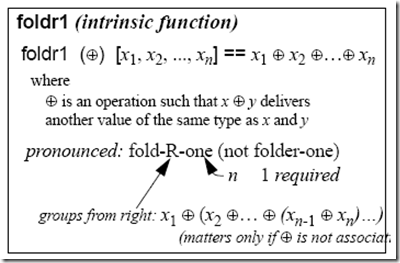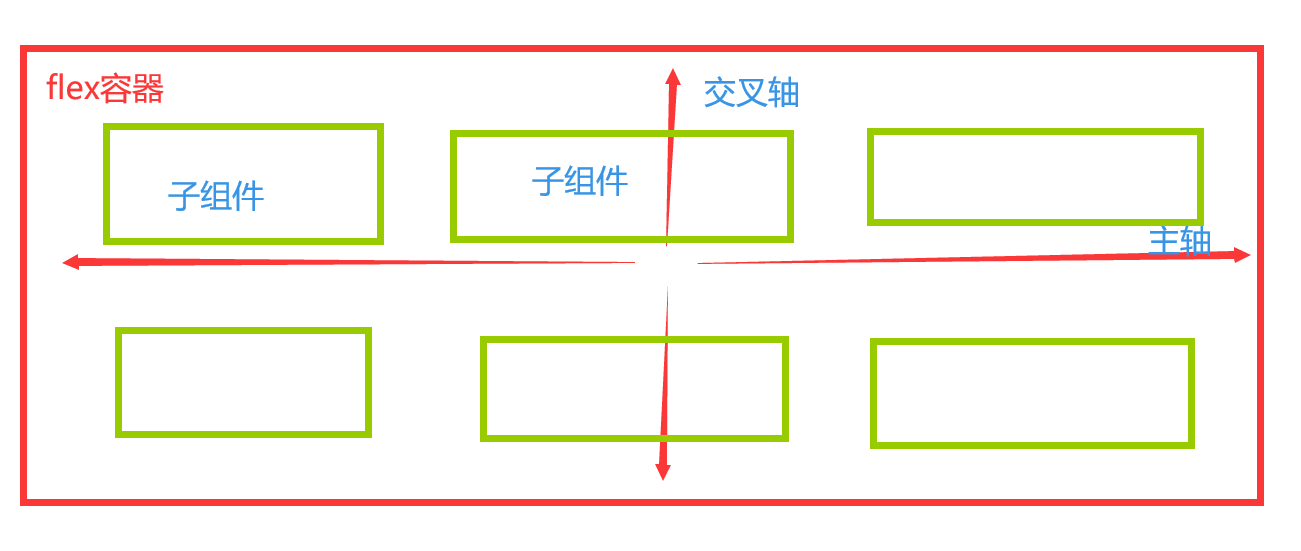本文主要是介绍《Two Dozen Short Lessons in Haskell》学习(六),希望对大家解决编程问题提供一定的参考价值,需要的开发者们随着小编来一起学习吧!
《Two Dozen Short Lessons in Haskell》(Copyright © 1995, 1996, 1997 by Rex Page,有人翻译为Haskell二十四学时教程,该书如果不用于赢利,可以任意发布,但需要保留他们的copyright)这本书是学习 Haskell的一套练习册,共有2本,一本是问题,一本是答案,分为24个章节。在这个站点有PDF文件。几年前刚开始学习Haskell的时候,感觉前几章还可以看下去,后面的内容越来越难以理解。现在对函数式编程有了一些了解后,再来看这些题,许多内容变得简单起来了。
初学Haskell之前一定要记住:
把你以前学习面向过程的常规的编程语言,如Pascal、C、Fortran等等统统忘在脑后,函数式编程完全是不一样的编程模型,用以前的术语和思维来理解函数式编程里的概念,只会让你困惑和迷茫,会严重地影响你的学习进度。
这个学习材料内容太多,想把整书全面翻译下来非常困难,只有通过练习题将一些知识点串起来,详细学习Haskell还是先看其它一些入门书籍吧,这本书配套着学学还是不错的。
第六章 Patterns of Computation — Composition, Folding, and Mapping
1 Suppose that post is a function that, given two letters, chooses the one that follows the other in the alphabet
(post ’x’ ’y’ is ’y’; post ’u’ ’p’ is ’u’). Then the formula foldr1 post string delivers
a the letter from string that comes earliest in the alphabet
b the letter from string that comes latest in the alphabet
c the first letter from string
d the last letter from string
2 Suppose that && is an operator that, given two Boolean values, delivers True if both are True and False otherwise.
Then the formula foldr1 (&&) [False, True, False, True, True] delivers the value
a True
b False
c Maybe
d Nothing — the formula doesn’t make sense
3 In the formula foldr1 f [a, b, c, d]
a a, b, c, and d must have the same type
b f must deliver a value of the same type as its arguments
c f must be a function that requires two arguments
d all of the above
4 If f is a function that requires two arguments, then foldr1 f is a function that requires
a no arguments
b one argument
c two arguments
d three arguments
5 The second argument of foldr1 must be
a a sequence
b a function
c a sequence of functions
d a function of sequences
6 If next is a function that, given a letter, delivers the next letter of the alphabet, then the mapping process in the
formula [next c | c <- "hal"] delivers the string
a "lah"
b "ibm"
c "alm"
d "lha"
7 The string "is \"hot\" now"
a has four quotation marks in it
b has exactly two spaces and two back-slashes
c has 12 characters, including exactly two spaces
d has 14 characters, including exactly two spaces
=========================================================
先
不
要
看
答
案
=========================================================
1 b
foldr1是个相当强大的内置函数,它可以在一个列表内的每两个元素之间都插入一个运算符。
如:foldr1 (+) [1..10]就是1+2+3+4+5+6+7+8+9+10,即返回55。
fold后面的字母r表示这个运算符是向右连接的(如何解释?)。

Haskell的强大在于这个列表不仅仅指数值,还可以把函数连接起来,如foldr1 (.) [f, g, h]就是(f . g . h),这里的f,g,h都是函数
用括号把一个运算符包起来,表示是一个函数,如(+)和(.)
如果写成foldr1 . [f, g, h],就会把中间的点解释成一个运算符,从而报错。
所以(+) 2 3也就是指2+3,前面这种表达式在LISP语言中常见。
foldr1 post "haskell" == 's'
2 b
foldr1 (&&) [False, True, False, True, True]就是False && True && False && True && True,就是“与”运算,返回False
函数的中缀表示法:div 5 2 == 5 `div`2。注意那个反向的`符号。
3 d
foldr1 f [a, b, c, d]
[a, b, c, d]列表必须要保证里面的元素都是同一种类型,[1, “a”]会报错
函数f一定有两个参数,两个参数与返回值都是同一种类型,后面学过类型后,f的类型应该是a –> a –> a。以前面的&&为例,a && b等价于(&&) a b,注意&&要用括号引起来。
想看一个函数的类型,可以在ghci(或winghci)中,执行:t 命令,后面跟上函数名称即可,例如 :t foldr1
得到:foldr1 :: (a -> a -> a) -> [a] –> a
4 b
foldr1有几个参数与f是无关的,foldr1总是需要2个参数,第一参数是一个函数(没错,函数也可以做为参数),第二个参数是一个列表
foldr1 f需要1个参数
5 a
foldr1的第二个参数是一个列表,这个列表可以是数值,也可以是函数
如第一题讲的,foldr1 (+) [1,2,3,4]中第二个参数是数值的列表
foldr1 (.) [f, g, h]中第二个参数是函数的列表,f, g, h都是函数
6 b
next得到一个字母在字母表中的下一个字母
[next c | c <- "hal"]对于"hal"中的每一个字符c,都调用 next c 函数,得到"ibm"
7 c
字符串的表示方式与C语言基本上一样,在表示引号时需要用转义符,"is \"hot\" now",有2个空格、2个引号、8个字母,共12个字符
这篇关于《Two Dozen Short Lessons in Haskell》学习(六)的文章就介绍到这儿,希望我们推荐的文章对编程师们有所帮助!








